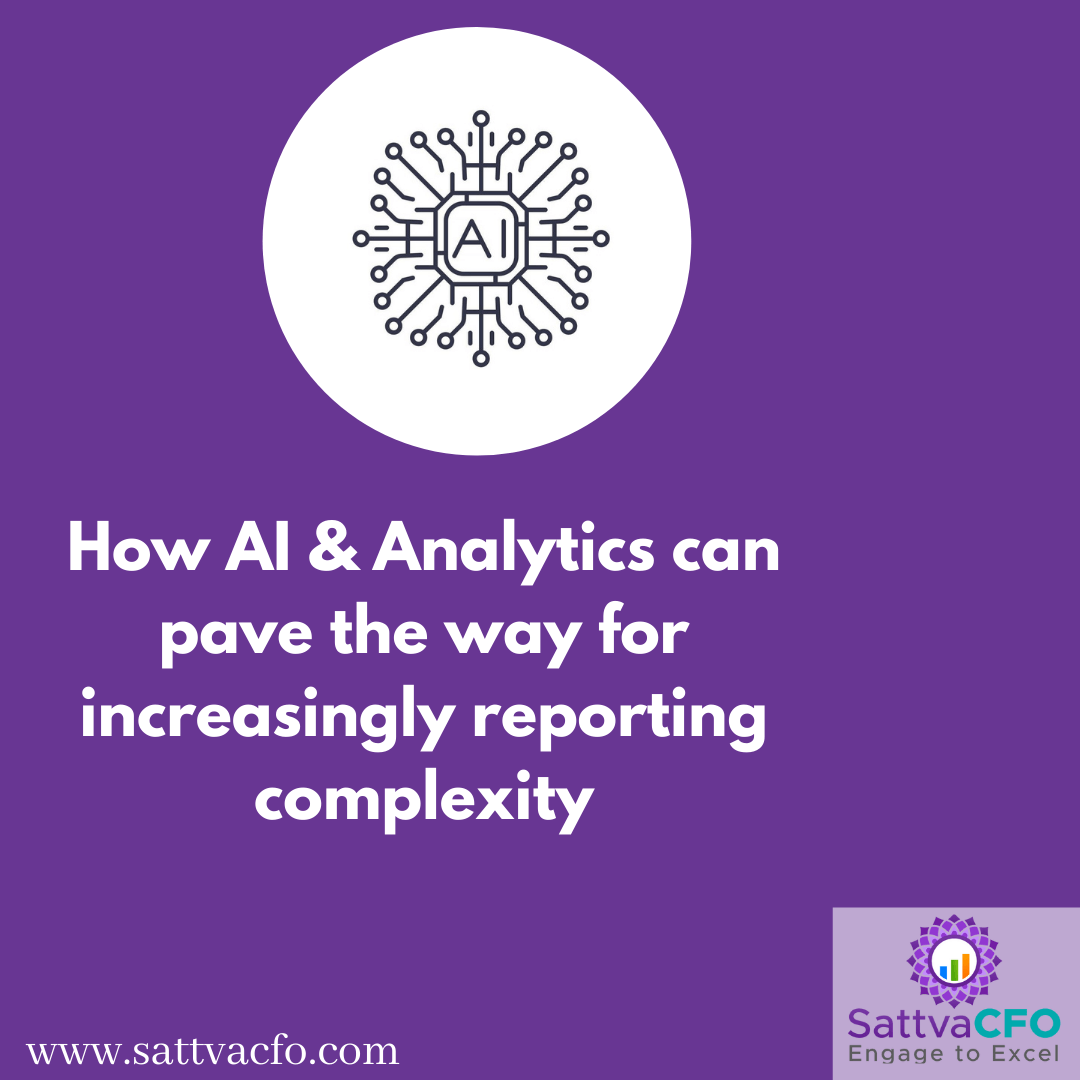How AI & Analytics can pave the way for increasingly reporting complexity
Sluggish growth, new competitors, an expanding workforce, changing business models, growing amounts of data, increased regulatory complexity, and a constant desire to minimize costs are all problems CFOs face in every industry. It’s no longer enough for CFOs to be the financial stewards of their companies, ensuring that financial reports are accurate and thorough in this environment. Furthermore, they must now use the data flowing through the organization to play a more strategic role, assisting fellow business executives in determining where the company is now and where it can and should go next week, next month, and next year. How AI & Analytics can pave the way for increasingly reporting complexity.
Table of Contents
Ever-increasing Reporting Complexities
The economic impact of transactions and other events on the company’s economic resources and capital structure is communicated in the corporate financial report. The goal is to provide information that will help investors and creditors make informed economic decisions. The data is also used to assess management’s stewardship performance. The information in a financial report should be presented so that it is simple to understand and analyze. Accounting principles and processes should be simple to grasp and apply according to accounting standards.
Many people claim that financial reports given by firms are too complicated to grasp and that accounting standards have grown too challenging to comprehend and apply. Financial reporting by organizations that participate in complex transactions and operate across multiple geographies cannot be straightforward; it is true. Accounting standards dealing with complicated situations cannot be simple, however.
AI & Analytics to pave the way
Artificial intelligence (AI) and machine learning (ML) incorporated in cloud applications, in particular, are at the forefront of delivering business value through end-to-end solutions. AI apps are virtually always required to be cloud-connected to the organization. This is because building data lakes on the cloud is the most cost-effective approach to give the raw fuel for machine learning and AI-derived insights.
Organizations may establish a data source that is second to none by linking internal data, third-party data, open data, and unstructured data in the cloud with critical corporate tools like human resource management, sales, and marketing. Intelligent algorithms may then analyze this data for hidden insights and deliver these insights to CFOs, along with recommendations for the next best step, assisting them in making the most significant business decisions possible. This allows firms to be both responsive and anticipatory. Over time, this method improves. Every time a CFO utilizes their experience to accept or reject AI advice, the machine learns from the experience and applies it to future analysis.
Tips to CFO’s for Success
Standardized Processes
The capacity to foresee in a straightforward method – for example, without running the entire machinery – is critical for timely and efficient compliance.
Align Processes
To avoid divergence, processes supporting separate (but comparable) activities must be aligned unless it is necessary. Organizations can minimize reconciliation and facilitate as much automation as feasible by integrating such operations into a shared services environment.
Integrate Reporting
To centralize reporting, remove data and interpretation challenges, and provide a consistent, holistic view across the enterprise, it is critical to connecting actuarial, finance, and IT divisions.
Data Management Strategies
Any analytically driven regulatory compliance program relies on data management techniques for data storage, data quality, and data access and integration.
Business Partner
CFOs can gain an advantage by hiring a CFO with experience dealing with similar complicated regulatory issues and that equipped to play the role of Finance Business Partner.
Conclusion
These pointers can benefit businesses in ways that go beyond a single campaign or compliance endeavor. When approached correctly, today’s compliance and modernization investments can lay the groundwork for a long-term foundation for all financial decision-making processes, from start to finish. How AI & Analytics can pave the way for increasingly reporting complexity.





Leave a Reply